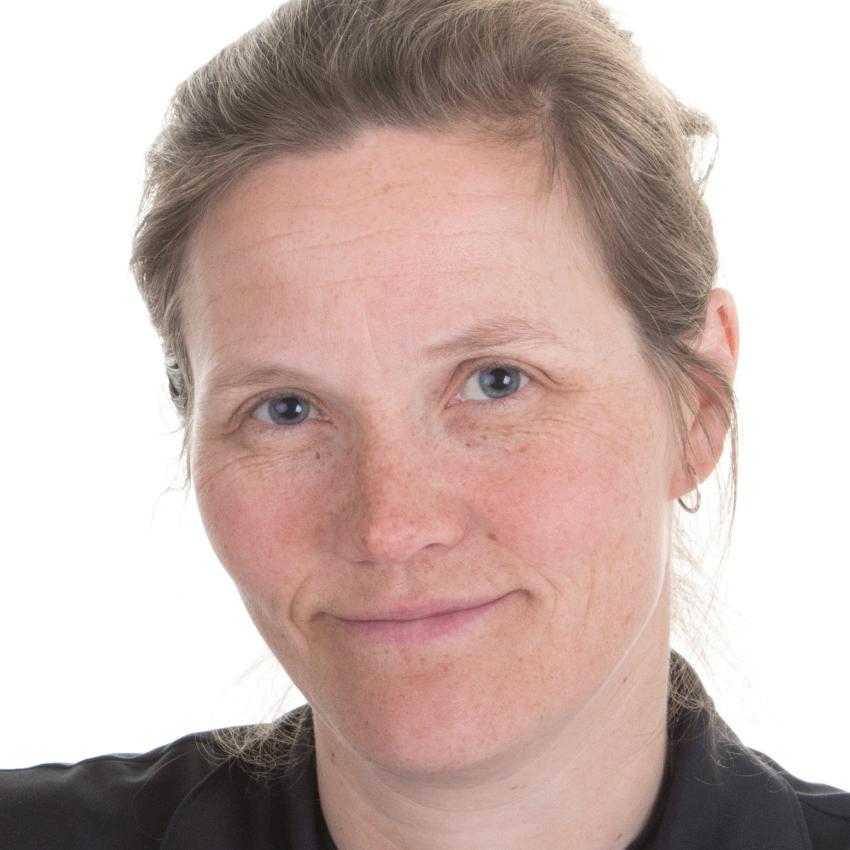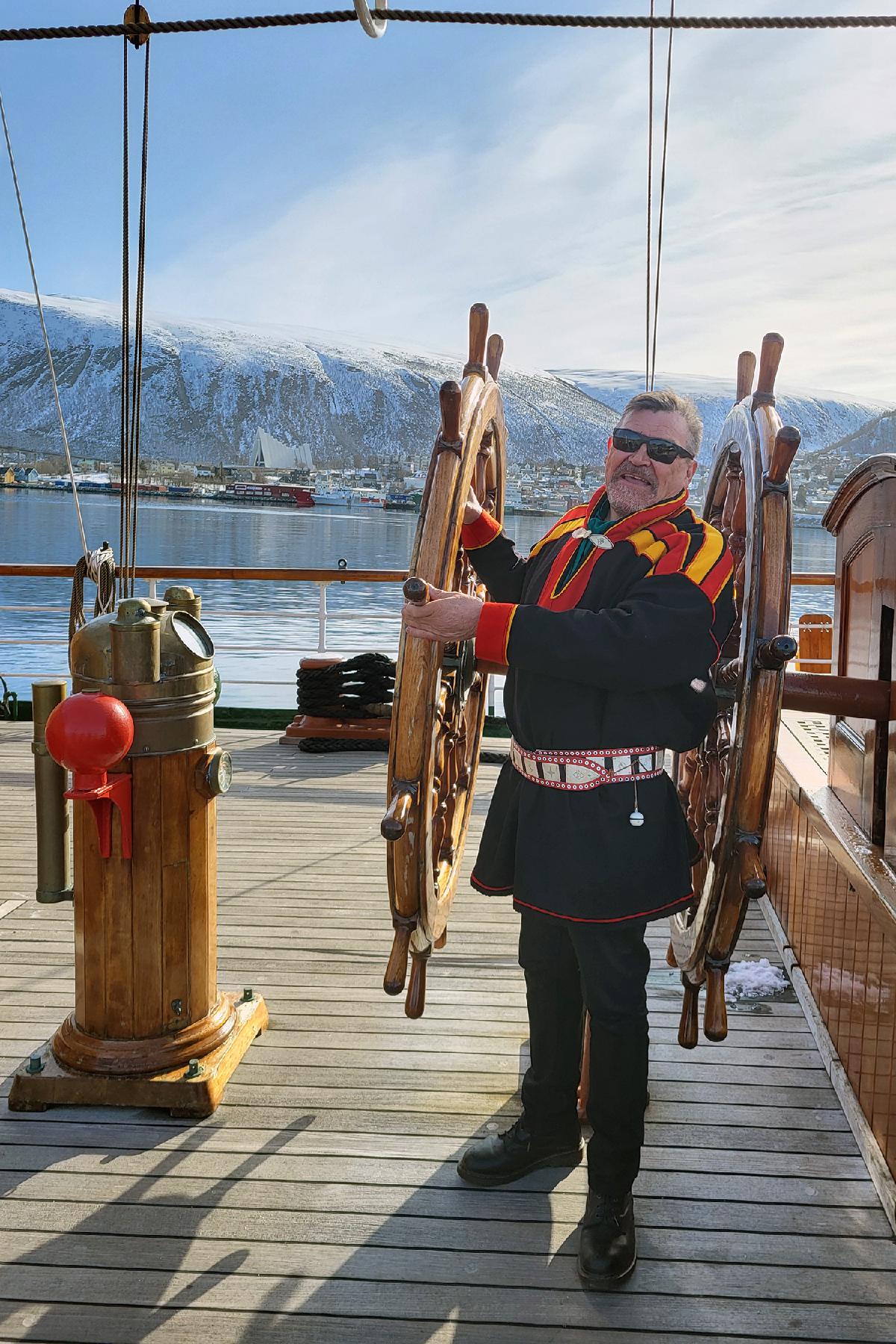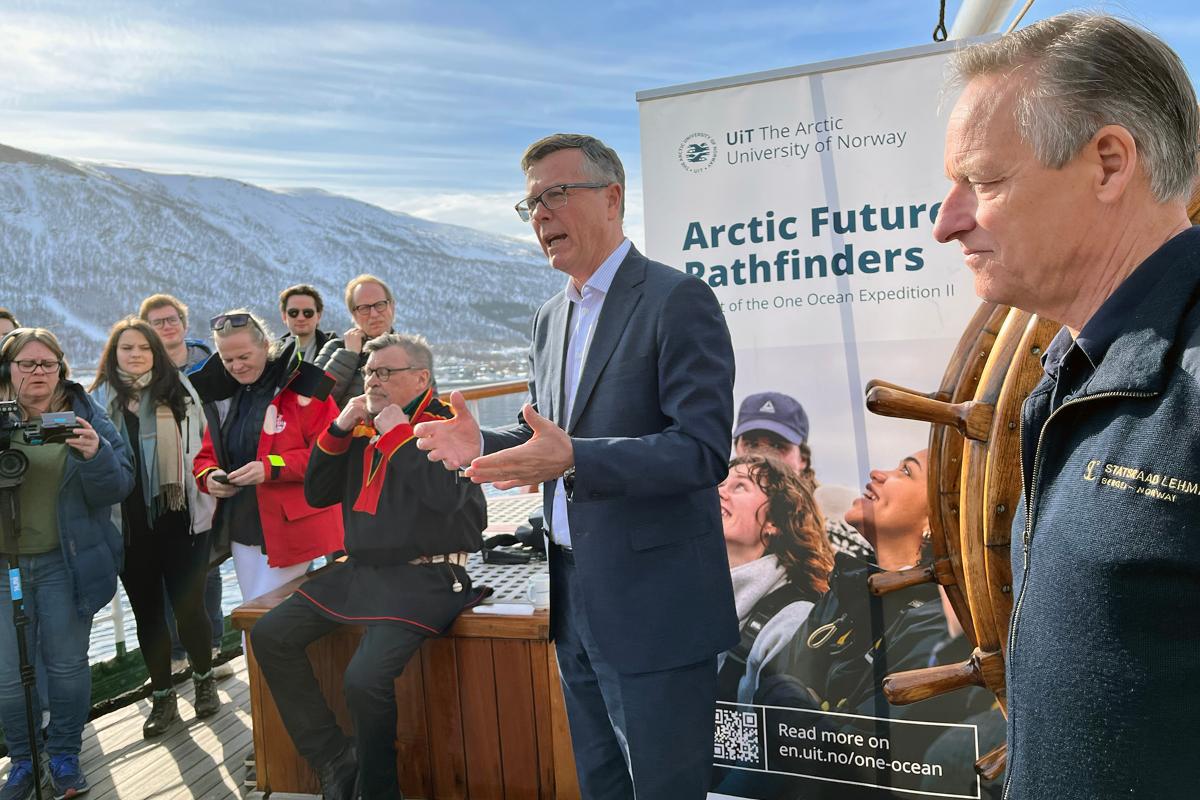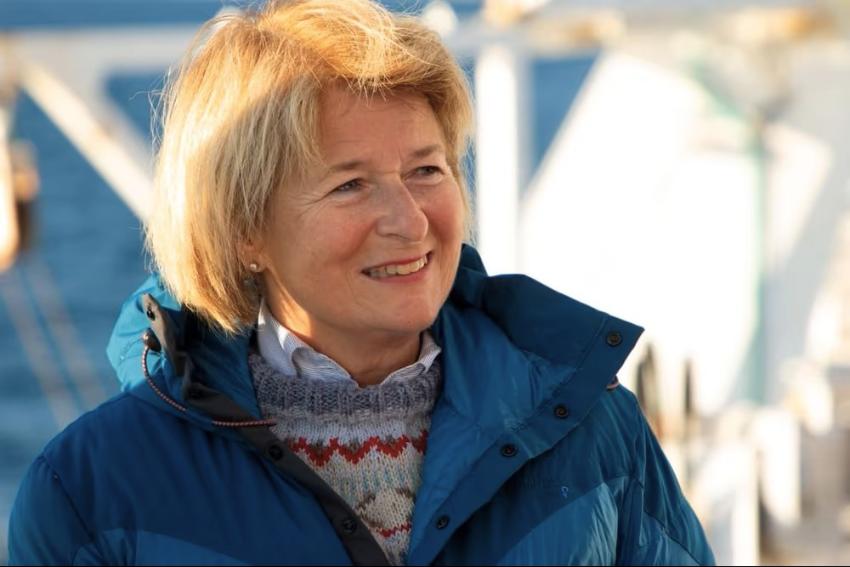Two-Eyed Seeing through the Northwest Passage
The Indigenous perspective is central to Arctic Future Pathfinders – the student course that will sail through the Northwest Passage aboard the Statsraad Lehmkuhl in August and September.


The voyage begins in Nuuk, Kalaallit Nunaat/Greenland, on August 5 and travels through the Northwest Passage before concluding in Whittier, Alaska, on October 4, with a stop in Cambridge Bay, Canada. Sixty students will participate in each of the two legs of the journey, along with a total of 40 researchers from UiT and partner universities. The course, organized by UiT, places great emphasis on incorporating Indigenous perspectives into all aspects of the voyage. Representatives from Indigenous communities in Norway and Kalaallit Nunaat/Greenland will be on board to share knowledge and experiences.

"We aim to create a platform where Indigenous knowledge is recognized and valued equally alongside academic research. This is an important part of our societal mission as a university," says Jan-Erik Henriksen, Associate Professor of Indigenous Studies at UiT, who will join one of the legs of the journey.
He refers to the Canadian First Nations concept of "Two-Eyed Seeing." This involves learning to see with one eye the strengths of Indigenous ways of knowing and with the other eye the strengths of Western ways of knowing, and using both eyes together.
"We want to raise awareness of how traditional knowledge and modern research can go hand in hand," says Henriksen.
Images from Kalaallit Nunaat/Greenland
One of the planned activities on board is a poster exhibition. The exhibition, part of the EU project Green Feedback, focuses on climate change and ecosystem services in the Arctic. It includes images from Kalaallit Nunaat/Greenland and results from previous workshops. The exhibition is planned to be displayed in Nuuk and possibly other locations along the route, with the goal of creating a platform for dialogue on how climate change affects Indigenous traditions and livelihoods.
"This journey is a fantastic opportunity to highlight both research findings and Indigenous knowledge," says Henriksen.
Other planned activities include a film festival featuring Indigenous films, a lasso-throwing competition, workshops on traditional crafts, language courses, and lectures on Sámi and Inuit relationships with nature.
Ethical Protocols and Collaboration
The researchers on board are also strongly focused on ethical guidelines and collaboration with local Indigenous communities. Protocols developed by the Inuit Circumpolar Council (ICC) are being used as a guide for conducting research in a respectful and inclusive manner.
"It is crucial that we listen to and collaborate with the local communities we visit," emphasizes Henriksen.
"This is not just about research but also about building trust and understanding. We see increasing 'research fatigue' because Indigenous peoples have, for many years, been treated as objects of research without necessarily benefiting from it. Therefore, it is important for us to adhere to the slogan 'Nothing about us, without us,'" he adds.

Challenges and Opportunities
Although there are certain challenges associated with the voyage, such as limited time on land and the lack of binding agreements with local partners so far, Henriksen remains optimistic about achieving his goals. Among other things, he hopes to collect material for the research project Birgejupmi, which has received three million euros in funding from the EU. There are also plans to conduct several activities involving local communities when the ship docks in Nuuk.
Henriksen hopes the voyage will raise awareness of Indigenous knowledge and how it can, for example, play a key role in addressing climate change.
"This is a unique opportunity to strengthen solidarity among Arctic Indigenous peoples and to highlight their perspectives on a global stage. This journey marks an important step toward bridging traditional knowledge and modern research, shedding light on how we can collectively address the challenges in the Arctic," says Henriksen.
Circumpolar inuit protocols:
- Nothing about us, without us
- Recognize Indigenous knowledge in its own right
- Practice good governance
- Communicate with intent
- Exercise Accountability - Building trust
- Build meaningful partnerships
- Information and datasharing, ownership and permission
- Equitable fund inuit representation and knowledge
-
Master of Philosophy in Visual and Multimodal Anthropology
Varighet: 2 År -
Arkeologi - master
Varighet: 2 År -
Peace and Conflict Transformation - master
Varighet: 2 År -
Indigenous Studies - master
Varighet: 2 År -
Geosciences - master
Varighet: 2 År -
Biology - master
Varighet: 2 År -
Technology and Safety - master
Varighet: 2 År -
Law of the Sea - master
Varighet: 3 Semestre -
Biologi - bachelor
Varighet: 3 År -
Nordisk - årsstudium
Varighet: 1 År -
Luftfartsfag - bachelor
Varighet: 3 År -
Pedagogikk - bachelor
Varighet: 3 År -
Arkeologi - bachelor
Varighet: 3 År -
Likestilling og kjønn - årsstudium
Varighet: 1 År -
Historie - bachelor
Varighet: 3 År -
Geovitenskap- bachelor
Varighet: 3 År -
Kjemi - bachelor
Varighet: 3 År -
Samfunnssikkerhet - bachelor
Varighet: 3 År -
Samfunnssikkerhet - master
Varighet: 2 År -
Kunst - bachelor
Varighet: 3 År -
Nordsamisk fra begynnernivå - årsstudium
Varighet: 1 År -
Kunsthistorie - master
Varighet: 2 År -
Religionsvitenskap - årsstudium
Varighet: 1 År -
Romfysikk, sivilingeniør - master
Varighet: 5 År -
Klima og miljøovervåkning, sivilingeniør - master
Varighet: 5 År -
Sosialantropologi - bachelor
Varighet: 3 År -
Historie - master
Varighet: 2 År -
Filosofi - bachelor
Varighet: 3 År -
Nordsamisk på morsmålsnivå - årsstudium
Varighet: 1 År -
Anvendt fysikk og matematikk, sivilingeniør - master
Varighet: 5 År -
Barnevernsarbeid - master
Varighet: 2 År -
Forfatterstudium 2 - årsstudium
Varighet: 1 År -
Fine Art - master
Varighet: 2 År -
Barnevern - bachelor
Varighet: 3 År -
Arctic Nature Guide - one year programme
Varighet: 1 År -
Sosialt arbeid - bachelor
Varighet: 3 År -
Arktisk friluftsliv og naturguiding - bachelor
Varighet: 3 År -
Arktisk friluftsliv - årsstudium
Varighet: 1 År -
Grunnskolelærerutdanning for 1.-7. trinn - master
Varighet: 5 År -
Kunsthistorie - årsstudium
Varighet: 1 År -
Vernepleie - bachelor
Varighet: 3 År -
Internasjonal beredskap - bachelor
Varighet: 3 År -
Barnevern - bachelor
Varighet: 3 År -
Vernepleie - bachelor (deltid)
Varighet: 4 År -
Landskapsarkitektur - master
Varighet: 5 År -
Grunnskolelærerutdanning for 5.-10. trinn - master
Varighet: 5 År -
Kvensk og finsk - bachelor
Varighet: 3 År -
Nordisk språk og litteratur - bachelor
Varighet: 3 År -
Russisk og russlandsstudier - bachelor
Varighet: 3 År -
Ph.d.-program i naturvitenskap
Varighet: 3 År


